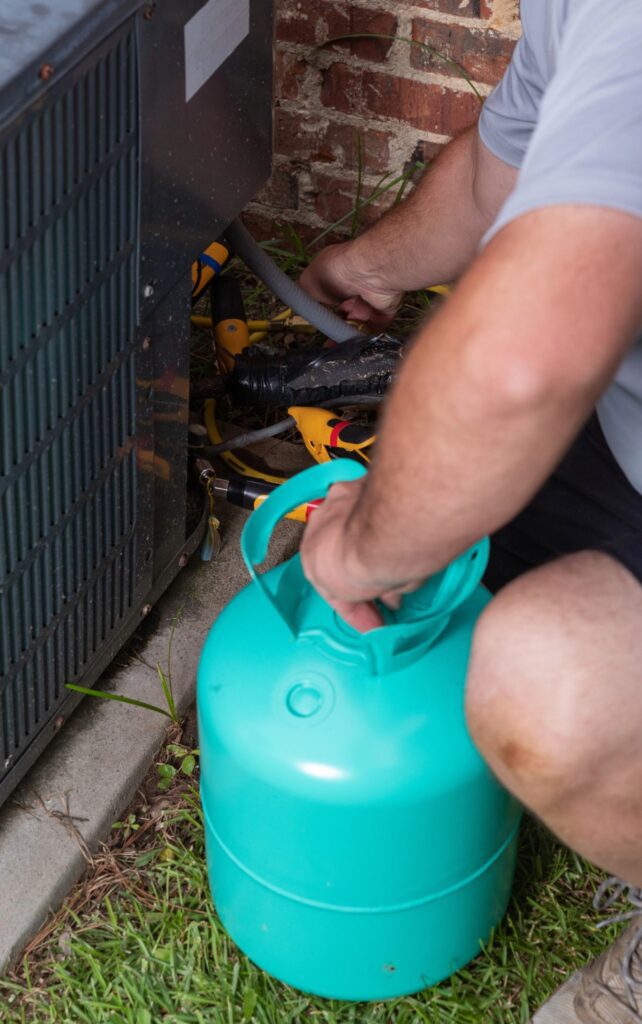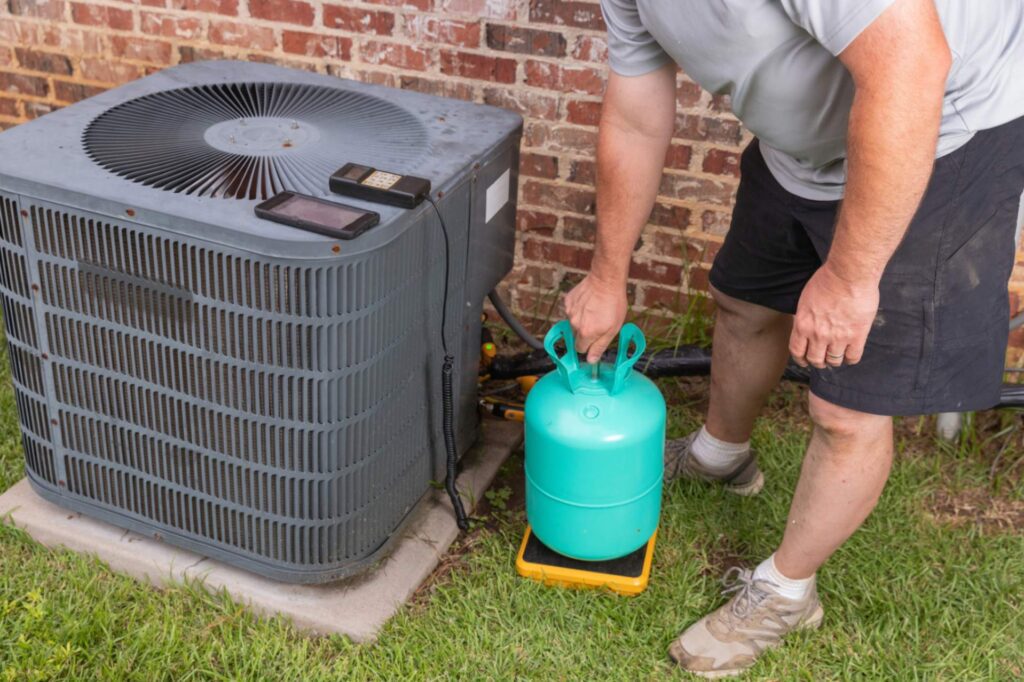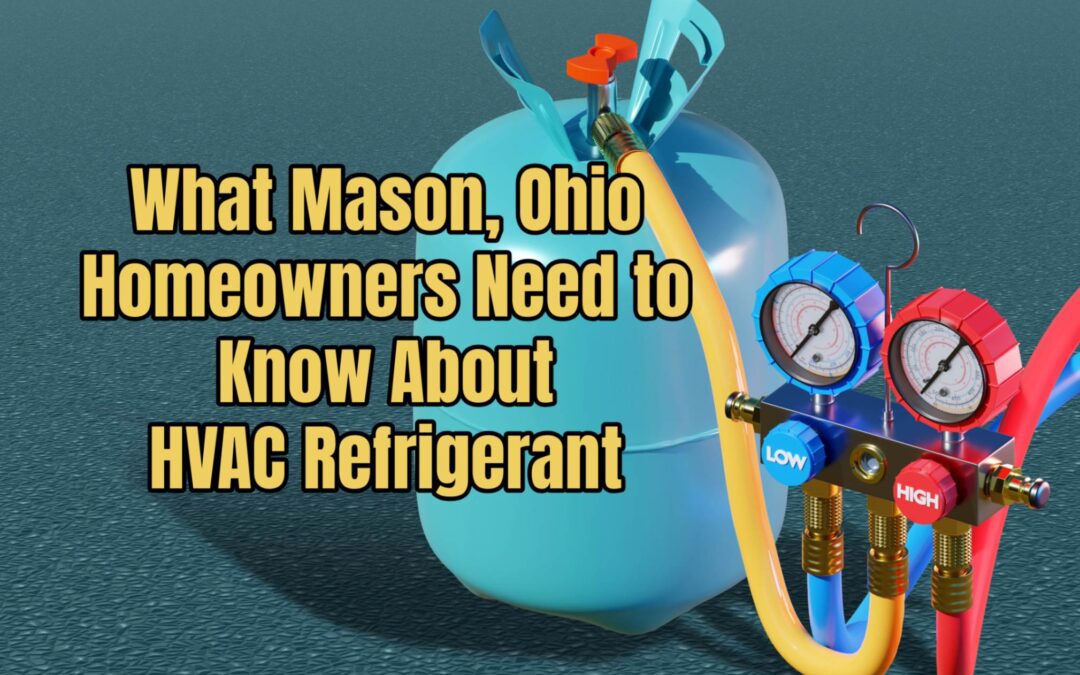In the HVAC industry, R-410A refrigerant has long been a staple for homeowners in Mason, Ohio, and everywhere else. As regulations evolve and the 2025 phase-out looms, understanding what this means for homeowners is essential.
HVAC refrigerant is the key substance that cools and dehumidifies the air within the air conditioning and refrigeration systems. This refrigerant has been a prominent choice for many years. However, recent regulatory updates have raised questions about its future, specifically its potential phase-out. Today, we will break down why R-410A is being phased out, what alternatives are emerging, and how it affects you as a local homeowner.

1. Understanding R-410A Refrigerant
To fully understand the implications of possibly discontinuing R-410A, it’s necessary first to understand just what exactly R-410A is. It is a hydrofluorocarbon (HFC) popular in many commercial and residential air conditioning systems. Introduced as a more eco-friendly alternative to R-22, which was phased out because of its harmful effects on the ozone layer, R-410A became the refrigerant of choice for many manufacturers and providers thanks to its excellent cooling efficiency.
Although R-410A doesn’t deplete the ozone layer like chlorofluorocarbons (CFCs) and hydrochlorofluorocarbons (HCFCs), it does have a high global warming potential (GWP), raising concerns over its environmental impact.
2. Moving Towards Environmental Responsibility with the R-410A Phase-out
R-410A’s phase-out aligns with a wider international effort to cut down on greenhouse gas emissions and mitigate climate change effects. The Kigali Amendment to the Montreal Protocol, which many countries have signed, aims to reduce the production and consumption of HFCs, including R-410A, by more than 80% in the coming decades. This international agreement emphasizes the need for HVAC manufacturers to switch to refrigerants with lower GWP.
In the United States, the Environmental Protection Agency (EPA) is enforcing regulations under the American Innovation and Manufacturing (AIM) Act to phase down HFCs. Such regulatory forces are pushing the industry towards finding more sustainable solutions.
3. Is R-410A Refrigerant Disappearing in 2025?
Timelines for phasing out HFCs like R-410A can differ by region and country due to varying local regulations. However, significant efforts to reduce R-410A usage are expected around 2025, supported by the Kigali Amendment and the EPA’s AIM Act.
While a complete global cessation by 2025 is unlikely, restrictions on new HVAC systems using R-410A are expected to grow. Manufacturers might stop producing new systems that rely on R-410A, instead focusing on equipment compatible with next-generation refrigerants with lower GWP.
4. R-410A’s Phase-out and Impact on the HVAC Sector
The possible phase-out of R-410A will have substantial effects on the HVAC sector. Key areas to consider include:
Transitioning to New Refrigerants: Manufacturers and service providers must prepare for a shift towards more eco-friendly refrigerants. Alternatives like R-32, R-454B (Opteon™ XL41), and R-466A (Solstice® N41) are becoming popular due to their lower GWP. Industry professionals should become acquainted with these options to offer customers effective solutions.
Training and Certification: As new refrigerants are introduced, training and certification become vital. HVAC technicians will need updated certifications to ensure safe handling and servicing of these new refrigerants and to comply with new environmental regulations.
Retrofitting and Upgrades: Systems currently using R-410A might be retrofittable to accommodate newer refrigerants, although the process can be complex and costly. Often, it may be more practical for consumers to replace their outdated systems with newer units designed for low-GWP refrigerants.
Cost and Availability: Switching to new refrigerants could affect HVAC systems’ cost and availability. As the demand for new refrigerants and equipment rises, manufacturers must ramp up production. Consumers may face higher initial costs due to the new technology and limited supply, though prices should stabilize as the market adjusts.
5. Preparing for the Change without R-410A
The HVAC industry is experiencing significant changes, and stakeholders must remain informed and proactive. Steps to prepare include:
- Stay Updated: Keep informed on regulatory changes and refrigerant phase-down timelines. Understanding international agreements like the Kigali Amendment, alongside domestic regulations, is critical.
- Choose Wisely: Partner with an HVAC company that will inform you and keep you up to date on the transition and current regulations.
- Evaluate Options: Businesses and homeowners should assess environmentally friendly choices when considering HVAC systems.
The good news is that Mason Heating & Air is committed to guiding our customers through these changes.

Just remember to leave any refrigerant refills and HVAC service should only be handled by qualified technicians. At Mason Heating & Air, we specialize in providing quick, proper service—no stress, no delays. Call us today to take care of all your AC maintenance needs.
Call Mason Heating & Air today at (513) 496-2477, or schedule an appointment online now by clicking here!
More HVAC Refrigerant Information
Our goal is always to keep you informed as best as we can. Learn more about the role of HVAC refrigerants and their role here!







